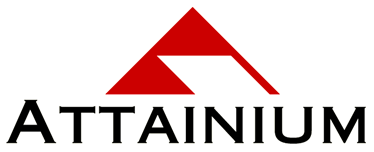Building on activities initiated in 2004, AAO-HNS strengthens plan with a year of testing, training, awareness and plan maintenance
By the time the American Academy of Otolaryngology-Head and Neck Surgery (AAO-HNS) had completed the development of its business continuity plan in 2004, concern about business continuity had evolved from an executive-level initiative to an ongoing part of the association’s day-to-day concerns, and The Academy was ready to take the next steps to test and maintain the plan.
The AAO-HNS is the national medical society representing the nation’s 12,000 physician specialists trained in the diagnosis and treatment of medical disorders of the ear, nose, throat, and related structures of the head and neck. The Academy is a major resource for continuing medical education, a requirement necessary for state licensure and maintenance of certification for its members. Consequently, any major disruption in the Academy’s business operations could have dire consequences for its member physicians, located in every state and the District of Columbia.
This was brought close to home during the tragic events of September 11, 2001. Academy staff could walk outside of their building, located in downtown Alexandria, Virginia, and see and smell the smoke coming from the Pentagon, which had been struck by a high jacked airliner.
“We viewed the completion of our business continuity plan as just the beginning of our business continuity activities; we needed to keep the plan alive and vital,” said Tom Harlow, The Academy’s CFO. “Our next steps, for which we contracted with Attainium, were threefold: ongoing maintenance of the plan, testing/exercising the plan, and staff awareness and training activities.
“The Academy’s Crisis Management Team has been the major player in the ongoing maintenance of the plan and holding monthly meetings to ensure that information in the plan is kept updated to reflect any changes in the organization,” said Pamela Wood, The Academy’s human resource director. “My role is to help keep things moving forward and documenting changes to the plan on a monthly basis.”
“Testing was the most significant thing we did over the year,” Harlow said. “We did a tabletop disaster training exercise, conducted by Attainium, that provided a lot of insight and learning with regard to our plan - what might work and what might not. The three to 3.5-hour exercise highlighted a number of things about the plan, and we saw it as a valuable experience.
“The primary purpose of the exercise was to make sure the crisis management team was familiar with the plan while evaluating our functional response capability, including plan knowledge and skills, mobilization of crisis management resources, as well as reinforcing the content and logic of the plan,” he said. “For my purposes, almost all our goals were achieved through the test, and Attainium gave us good grades on the outcome.
“The biggest takeaway of the exercise,” Harlow said, “was the knowledge that a crisis of magnitude involves more than data and evacuation. There are media concerns, member communication… In the Q&A session after the exercise, we realized we never did get the group together to declare an emergency; we were too busy responding. If we had followed the plan, our communications and other resources would have been intact. As contrived as a test may seem beforehand, it’s amazing how involved we were in the process.”
“Bob Mellinger, Attainium’s CEO, conducted the training, and he treats it seriously… doesn’t waiver from his role,” Wood said. “We definitely came out of the exercise more aware of what we needed to do going forward. We really see the value of it in feeling more prepared. Our 70+ employees are aware of these activities and feel they’re looked out for; they know we’re taking disaster response seriously and it helps to alleviate their concerns. It’s also reassuring to new staff members who learn about it when they come on board.”
“We have had our incident managers and floor marshals talking to the staff so people know there is a course of action to be followed,” Harlow said. “In addition, we have printed and distributed emergency contact cards that fit in a wallet or purse and contain contact information and procedures right out of the plan; we update these on a quarterly basis. Training and awareness are critical; people’s responses are so much more calm and casual when they know someone has thought about it and put a plan in place.
“There is a lot of value in our ongoing relationship with Attainium,” Harlow said. “It is important to have an outside consultant who spends time thinking about the process – pointing out flaws, giving recommendations, best practices, and making sure these are integrated into our core business operations without any negative impact.”
“Everybody should have some form of emergency plan in place,” Wood added. “It’s the small overlooked things that can get you into trouble.”
# # #

